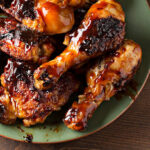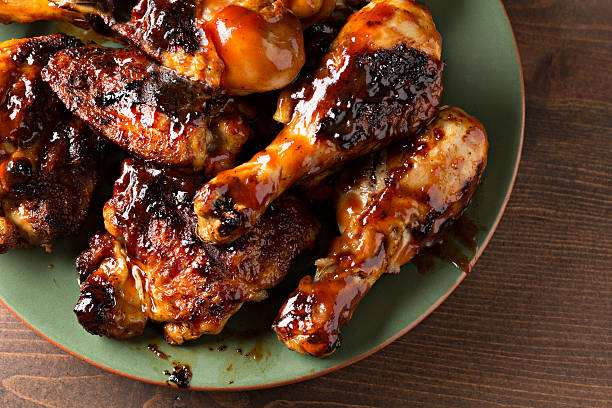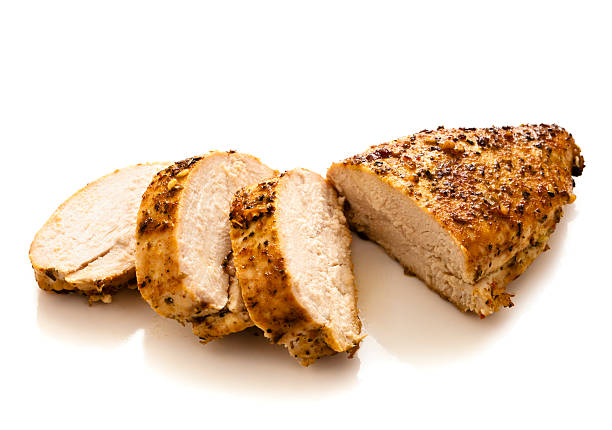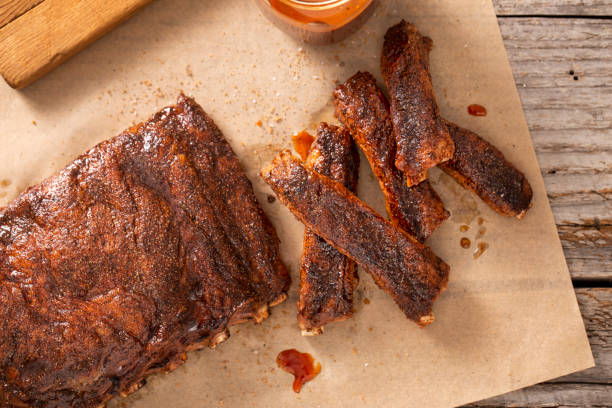
Are you ready to tantalize your taste buds and sink your teeth into some succulent goodness? Look no further than ribs! These mouthwatering cuts of meat are a barbecue favorite and a true delight for meat lovers. Whether you prefer them smoky and charred or tender and falling off the bone, ribs are sure to satisfy your cravings. In this article, we’ll dive into the world of ribs, exploring their different types, cooking techniques, and mouthwatering recipes that will have you licking your fingers in delight.
Table of Contents
- Introduction
- What Are Ribs?
- The Anatomy of Ribs
- Types of Ribs
- 4.1 Spare Ribs
- 4.2 Baby Back Ribs
- 4.3 Beef Ribs
- 4.4 Country Style Ribs
- Choosing the Perfect Ribs
- Preparing Ribs for Cooking
- The Art of Seasoning
- Cooking Methods for Ribs
- 8.1 Grilling Ribs
- 8.2 Smoking Ribs
- 8.3 Baking Ribs
- 8.4 Instant Pot Ribs
- 8.5 Slow-Cooker Ribs
- Secrets to Tender and Juicy Ribs
- Mouthwatering Rib Recipes
- 10.1 Classic Barbecue Ribs
- 10.2 Asian-Inspired Sticky Ribs
- 10.3 Sweet and Spicy Honey Glazed Ribs
- 10.4 Smoky Chipotle Spare Ribs
- 10.5 Fall-off-the-Bone Apple Cider Ribs
- Serving Suggestions and Side Dishes
- Common Rib Cooking Mistakes to Avoid
- Tips and Tricks for Perfect Ribs
- Frequently Asked Questions (FAQs)
- 14.1 Can I freeze cooked ribs?
- 14.2 How do I prevent ribs from drying out?
- 14.3 What is the best wood for smoking ribs?
- 14.4 How long should I marinate ribs?
- 14.5 Can I grill ribs without a barbecue?
- 14.6 Are ribs suitable for a low-carb diet?
- Conclusion
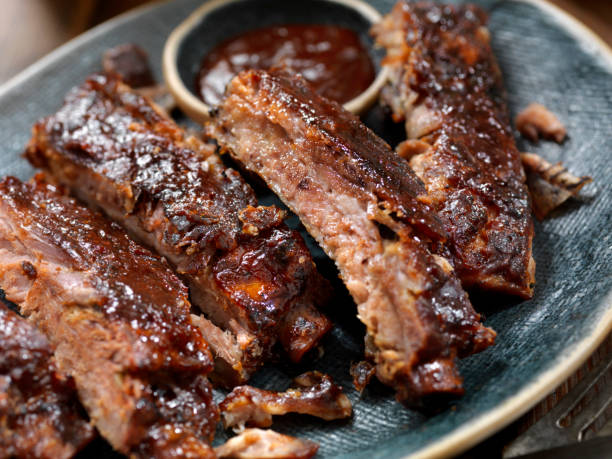
Introduction
Who can resist the allure of tender, juicy, and flavor-packed ribs? Whether you’re hosting a backyard barbecue, watching the big game, or simply craving a hearty meal, ribs are the perfect choice. From the sizzling sounds of the grill to the smoky aroma that fills the air, cooking ribs is an experience that awakens the senses and brings people together.
In this article, we’ll take a deep dive into the world of ribs. We’ll explore the different types of ribs, learn about their anatomy, and discover the secrets to cooking ribs that are moist, tender, and bursting with flavor. Get ready for a journey that will leave you craving ribs like never before!
What Are Ribs?
Ribs are cuts of meat that come from the ribcage of animals, typically pork or beef. They are known for their rich flavor, tender texture, and the finger-licking goodness they deliver. Ribs can be enjoyed in various styles, from saucy and sticky to dry-rubbed and smoky. Regardless of the cooking method or seasoning, one thing remains constant—ribs are a true crowd-pleaser.
The Anatomy of Ribs
To truly appreciate the marvel that is ribs, let’s dive into their anatomy. Ribs are composed of bones, meat, and connective tissue. Each rib consists of bone surrounded by layers of meat, including fat and collagen. The bone provides structure and imparts flavor, while the meat and connective tissue contribute to the tenderness and succulence of the final dish.
When cooked low and slow, the connective tissue breaks down, resulting in ribs that are fall-off-the-bone tender. The fat melts away, infusing the meat with flavor and creating a moist and juicy eating experience. It’s this magical combination of elements that makes ribs such a delectable treat.
Types of Ribs
Not all ribs are created equal. There are several different types of ribs, each with its own unique characteristics and flavors. Let’s explore the most popular types of ribs that you’re likely to encounter on your culinary journey.
4.1 Spare Ribs
Spare ribs are the quintessential barbecue ribs. They come from the belly area of the pig, just below the baby back ribs. Spare ribs have a higher fat content, which adds richness and flavor. They are typically larger and meatier than baby back ribs, making them a favorite among rib enthusiasts.
Cooking spare ribs low and slow allows the fat to render and the connective tissue to break down, resulting in tender and succulent meat. They are often enjoyed with a tangy barbecue sauce that complements their savory taste.
For a truly finger-licking experience, try preparing spare ribs using the traditional Kansas City-style barbecue method. These ribs are seasoned with a dry rub, slow-cooked over indirect heat, and basted with a sweet and smoky sauce.
4.2 Baby Back Ribs
If you’re in search of ribs that are lean and tender, look no further than baby back ribs. These ribs are taken from the upper part of the pig’s ribcage, close to the backbone. Baby back ribs are known for their tenderness, succulence, and delicate flavor.
Due to their smaller size and leaner meat, baby back ribs cook relatively quickly compared to other types of ribs. They are often grilled or smoked to perfection, allowing their natural flavors to shine. Baby back ribs are a popular choice for those who prefer a milder taste and a more delicate eating experience.
To achieve irresistible baby back ribs, season them with a flavorful dry rub, grill them over medium heat, and baste with a glaze of your choice for a tantalizing caramelized finish.
4.3 Beef Ribs
Beef ribs are a meat lover’s dream come true. These hearty and robust ribs come from cattle and offer a bold and intense flavor profile. With their generous marbling and meaty texture, beef ribs are a true indulgence for those seeking a carnivorous feast.
Beef ribs can be found in various sizes and shapes, with the two most common types being short ribs and back ribs. Short ribs are cut from the chuck area and are known for their rich marbling and deep flavor. Back ribs, on the other hand, are taken from the rib primal cut and offer a larger, bone-in portion.
To unlock the full potential of beef ribs, they require slow cooking methods such as smoking or braising. The low and slow approach allows the fat to render and the connective tissue to break down, resulting in melt-in-your-mouth tenderness.
4.4 Country Style Ribs
Country style ribs are a departure from the traditional rib cuts. These meaty ribs are not actually ribs but are sliced from the pork shoulder or loin. Country style ribs are known for their meatiness, tenderness, and versatility.
These ribs can be enjoyed in various ways, from grilling and smoking to braising and baking. They are often seasoned with robust flavors and paired with tangy barbecue sauces or savory glazes. Country style ribs are perfect for those who desire a generous serving of tender meat with each bite.
Choosing the Perfect Ribs
When it comes to selecting ribs, there are a few key factors to consider to ensure you end up with the perfect slab of meat. Here are some tips to help you choose the best ribs for your next barbecue feast:
- Freshness: Opt for ribs that are fresh, with a bright color and no unpleasant odor. Fresh ribs will yield the best flavor and texture.
- Marbling: Look for ribs with good marbling—the fat running through the meat. Marbling adds flavor and helps keep the ribs moist during cooking.
- Thickness: Choose ribs that are uniform in thickness. This ensures even cooking and prevents some portions from drying out while others remain undercooked.
- Bone Structure: Check the bones in the ribs. They should be straight and intact, without any fractures. Straight bones indicate that the ribs were properly handled and not subjected to excessive stress.
- Source: Whenever possible, choose ribs from high-quality sources, such as trusted local butchers or reputable meat suppliers. These ribs are often sourced from animals that have been raised in humane and sustainable conditions.
By keeping these factors in mind, you can guarantee that you’re starting with top-notch ribs that will elevate your culinary experience.
Preparing Ribs for Cooking
Before you dive into cooking your ribs, it’s essential to prepare them properly. Proper preparation not only enhances the flavor but also helps tenderize the meat and ensures even cooking. Here’s a step-by-step guide to preparing your ribs:
- Remove the Membrane: Most racks of ribs come with a thin, tough membrane on the bone side. This membrane can hinder the absorption of flavors and make the ribs chewy. To remove it, gently slide a butter knife under the membrane, lift it, and grab it with a paper towel. Pull it off in one swift motion.
- Trim Excess Fat: While fat is essential for flavor and moisture, excessive fat can result in greasy ribs. Trim any large pieces of fat, leaving a thin layer to enhance the flavor and juiciness of the ribs.
- Pat Dry: Use paper towels to pat the ribs dry. Removing excess moisture helps the seasonings adhere better to the meat and ensures a better sear or crust during cooking.
- Optional: Brining or Marinating: Depending on your preference, you can brine or marinate the ribs before cooking. Brining involves soaking the ribs in a saltwater solution, while marinating involves coating the ribs with a flavorful liquid or dry rub. Both methods enhance the flavor and tenderness of the meat.
Once you’ve prepared your ribs, it’s time to move on to the exciting part—seasoning them with delicious flavors that will elevate them to new heights.
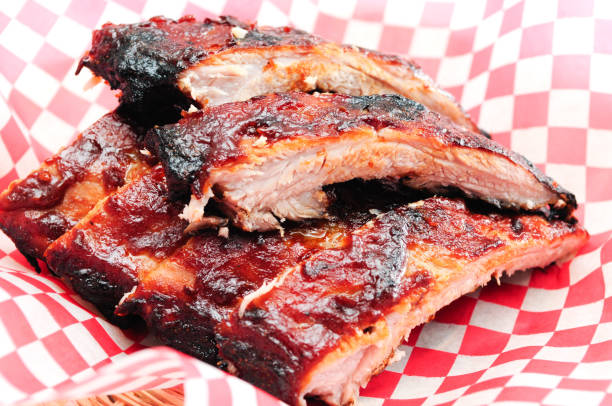
The Art of Seasoning
Seasoning is where the magic begins. It’s the gateway to flavor town and the secret to transforming a simple rack of ribs into a tantalizing masterpiece. The right combination of spices, herbs, and seasonings can elevate the natural flavors of the meat and create a symphony for your taste buds. Here are some essential elements of rib seasoning:
- Dry Rubs: Dry rubs are a popular choice for seasoning ribs. They consist of a blend of herbs, spices, salt, and sugar that is rubbed onto the surface of the meat. Dry rubs add depth, complexity, and a beautiful crust to the ribs. Common ingredients in a dry rub include paprika, brown sugar, garlic powder, onion powder, chili powder, cayenne pepper, and black pepper. The exact combination can vary depending on personal preference and the desired flavor profile.
- Wet Marinades: Wet marinades are another option for seasoning ribs. They involve soaking the ribs in a flavorful liquid, allowing the meat to absorb the flavors. Marinades can consist of a variety of ingredients such as soy sauce, Worcestershire sauce, vinegar, citrus juice, honey, herbs, and spices. The ribs can be marinated for several hours or even overnight to infuse them with maximum flavor.
- Barbecue Sauces: Barbecue sauces are a classic accompaniment to ribs. They can be brushed onto the ribs during cooking or served as a dipping sauce on the side. Barbecue sauces come in a variety of styles, ranging from sweet and tangy to spicy and smoky. They can be store-bought or homemade, allowing you to tailor the flavor to your liking.
The key to successful seasoning is balance. Experiment with different combinations of spices and flavors to find your perfect balance of sweet, savory, tangy, and spicy. Remember to taste as you go and adjust the seasoning to your liking. Once your ribs are seasoned, it’s time to fire up the grill or preheat the oven and get ready to embark on a culinary adventure.
Cooking Methods
Cooking ribs is a culinary art form. It requires the right combination of time, temperature, and technique to achieve ribs that are tender, flavorful, and downright irresistible. Whether you prefer grilling, smoking, baking, or using a slow cooker, there’s a cooking method that will suit your taste and available equipment. Let’s explore some popular cooking methods for ribs:
8.1 Grilling Ribs
Grilling ribs is a beloved tradition that brings people together. The combination of open flames, smoky char, and the unmistakable aroma of sizzling meat creates an experience that is hard to replicate. Grilling allows you to achieve a beautiful sear and caramelization on the outside of the ribs while keeping the inside tender and juicy.
Here’s a step-by-step guide to grilling ribs to perfection:
- Preheat the Grill: Preheat your grill to medium heat, around 300-350°F (150-175°C). If using a charcoal grill, arrange the coals to create a two-zone fire—a hot zone for searing and a cooler zone for indirect heat.
- Prepare the Ribs: Brush the grill grates with oil to prevent sticking. Place the seasoned ribs on the grill, bone-side down, over indirect heat. Close the grill lid and let the ribs cook for about 1.5 to 2 hours, depending on the thickness of the ribs.
- Baste and Flip: After the first hour of cooking, baste the ribs with your favorite barbecue sauce or glaze. Flip the ribs to ensure even cooking and brush the other side with sauce as well. Continue grilling for another 30 minutes to an hour, basting and flipping every 15 minutes.
- Check for Doneness: To check for doneness, use a meat thermometer to ensure the internal temperature of the thickest part of the meat reaches 165°F (74°C) for pork ribs or 145°F (63°C) for beef ribs. Alternatively, you can perform the bend test: gently pick up the ribs with tongs and observe how much they bend. If they bend easily and the meat starts to pull away from the bone, they are done.
- Rest and Serve: Once the ribs are cooked to perfection, remove them from the grill and let them rest for 10-15 minutes. This allows the juices to redistribute and ensures a more flavorful and tender eating experience. Slice the ribs between the bones, serve them up, and watch your guests’ faces light up with delight.
Grilling ribs not only imparts a delightful smoky flavor but also creates a beautiful charred crust that adds texture and depth to the ribs. It’s a versatile cooking method that allows you to experiment with different wood chips, charcoal arrangements, and grilling techniques to achieve your desired flavor profile.
8.2 Smoking Ribs
Smoking ribs takes the art of barbecue to a whole new level. It’s a slow and methodical process that results in ribs that are incredibly tender, infused with a rich smoky flavor, and guaranteed to impress even the most discerning barbecue connoisseurs.
To smoke ribs like a pro, follow these steps:
- Select the Right Wood: Choose the right wood for smoking ribs. Popular options include hickory, mesquite, apple, cherry, and oak. Each wood imparts its own unique flavor profile, so experiment with different combinations to find your favorite.
- Prepare the Smoker: Preheat your smoker to a temperature of 225-250°F (107-121°C). Ensure that you have a steady flow of smoke throughout the cooking process. Soak the wood chips or chunks in water for at least 30 minutes before placing them on the coals or in the smoker box.
- Season the Ribs: Apply a dry rub or wet marinade to the ribs, ensuring that they are thoroughly coated with flavor. Let the ribs sit at room temperature for about 30 minutes to allow the flavors to penetrate the meat.
- Smoke the Ribs: Place the seasoned ribs on the smoker grates bone-side down. Close the smoker lid and let the ribs smoke for approximately 4-6 hours, depending on the thickness of the ribs and your desired level of tenderness.
- Baste and Monitor: After the first 2-3 hours of smoking, baste the ribs with a mop sauce or spritz them with a flavored liquid to keep them moist. Continue to monitor the temperature of the smoker and the internal temperature of the meat.
- Check for Doneness: To ensure the ribs are done, use a meat thermometer to check the internal temperature. Pork ribs should reach an internal temperature of 165°F (74°C), while beef ribs should reach 145°F (63°C). You can also perform the bend test—when the ribs bend easily and the meat starts to pull away from the bone, they are ready to be removed.
- Rest and Enjoy: Once the ribs are cooked, remove them from the smoker and let them rest for 10-15 minutes. This allows the juices to redistribute and enhances the tenderness and flavor. Slice the ribs between the bones, serve them up, and savor the smoky goodness.
Smoking ribs is a labor of love that requires patience and attention to detail. The long cooking time allows the meat to absorb the smoky flavors and become incredibly tender. It’s a rewarding experience that will make you the barbecue hero among your family and friends.
8.3 Baking Ribs
If you don’t have access to a grill or smoker, or if you prefer a more hands-off approach, baking ribs in the oven can yield delicious results. While you won’t achieve the same smoky flavor as with grilling or smoking, baking ribs allows for easy and consistent cooking, making it a convenient option for many home cooks.
Follow these steps for perfectly baked ribs:
- Preheat the Oven: Preheat your oven to 275°F (135°C) for a low and slow cooking process. This temperature allows the ribs to cook gently and become tender without drying out.
- Prepare the Ribs: Season the ribs with a dry rub or marinate them according to your preference. Make sure the ribs are well-coated with the seasonings, ensuring maximum flavor.
- Wrap in Foil: Wrap the seasoned ribs tightly in aluminum foil to create a packet. This helps trap moisture and heat, allowing the ribs to cook in their own juices and become tender.
- Bake the Ribs: Place the foil-wrapped ribs on a baking sheet and transfer them to the preheated oven. Bake for approximately 2.5 to 3 hours, or until the meat is tender and easily pulls away from the bone.
- Finish on the Grill: For those who desire a smoky flavor and a bit of char, you can finish the ribs on the grill. Simply unwrap the ribs from the foil and place them directly on a preheated grill over medium heat. Grill for a few minutes on each side to develop a caramelized crust.
- Rest and Serve: Once the ribs are cooked to perfection, remove them from the oven or grill and let them rest for 10-15 minutes. This allows the juices to redistribute, resulting in a more flavorful and juicy end product. Slice the ribs between the bones, serve them up, and revel in the tender goodness.
Baking ribs in the oven is a foolproof method that ensures tender and succulent results. It’s a great option for those who don’t have access to outdoor grills or smokers but still want to enjoy the deliciousness of ribs.
8.4 Slow Cooking Ribs
If you’re looking for a set-it-and-forget-it approach to cooking ribs, a slow cooker or crockpot can be your best friend. Slow cooking allows the ribs to become incredibly tender and juicy while requiring minimal effort on your part.
Here’s how to slow cook ribs to perfection:
- Season the Ribs: Season the ribs with your desired dry rub or wet marinade. Ensure that the ribs are coated evenly with flavor.
- Preheat the Slow Cooker: Preheat your slow cooker on the low or high setting, depending on your desired cooking time. Low is ideal for longer, more tenderizing cooking, while high provides a faster cooking time.
- Layer the Ribs: Place the seasoned ribs in a single layer in the slow cooker, bone-side down. If needed, cut the ribs into smaller sections to fit.
- Add Liquid: Depending on your recipe, you may need to add some liquid to the slow cooker. This can be water, broth, barbecue sauce, or a combination of flavors. The liquid helps keep the ribs moist during the long cooking process.
- Cook on Low or High: Cover the slow cooker with the lid and cook the ribs on low for 6-8 hours or on high for 3-4 hours. The longer cooking time on low heat will result in more tender ribs.
- Finish on the Grill: To achieve a beautiful crust and smoky flavor, you can finish the slow-cooked ribs on the grill. Simply transfer the ribs to a preheated grill and cook for a few minutes on each side until they develop a caramelized crust.
- Rest and Serve: Once the ribs are cooked to perfection, remove them from the slow cooker and let them rest for 10-15 minutes. This allows the juices to redistribute and ensures a more flavorful eating experience. Slice the ribs between the bones, serve them up, and enjoy the melt-in-your-mouth tenderness.
Slow cooking ribs allows the meat to become incredibly tender, practically falling off the bone. It’s a hassle-free cooking method that requires minimal supervision, making it perfect for busy individuals or those who prefer a hands-off approach to cooking.
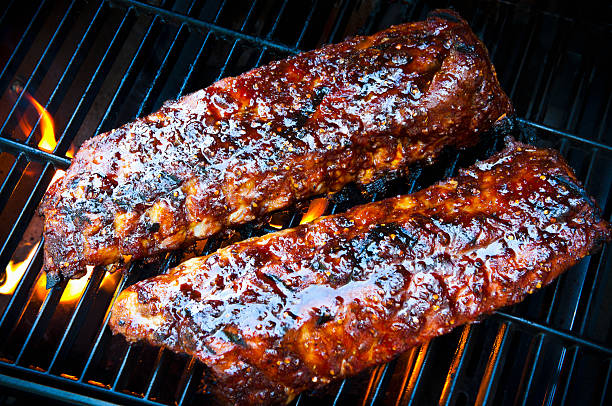
Serving and Pairing Ribs
Now that you have mastered the art of cooking ribs, it’s time to elevate your dining experience by serving them with complementary side dishes, sauces, and beverages. Here are some mouthwatering suggestions to take your ribs to the next level:
9.1 Side Dishes for Ribs
- Classic Coleslaw: The crisp and tangy flavors of coleslaw perfectly complement the richness of ribs. The creamy dressing and crunchy cabbage provide a refreshing contrast to the meaty ribs. Plus, the vibrant colors make for an attractive plate.
- Baked Beans: A classic barbecue side dish, baked beans add a touch of sweetness and heartiness to your meal. The smoky undertones in the beans harmonize with the smoky flavors of the ribs, creating a match made in barbecue heaven.
- Cornbread: Whether served as a slice, muffin, or even crumbled as a topping, cornbread adds a touch of sweetness and a pleasing texture to your rib feast. Its buttery and slightly crumbly nature complements the tender meat.
- Grilled Vegetables: Lightly charred and seasoned vegetables, such as zucchini, bell peppers, and onions, bring freshness and a burst of flavor to your plate. The grilled veggies provide a balanced and nutritious element to your rib-centric meal.
- Potato Salad: Creamy, tangy, and full of flavor, potato salad is a classic side dish that pairs well with ribs. The combination of tender potatoes, crunchy vegetables, and zesty dressing creates a delightful contrast to the meat.
- Macaroni and Cheese: Indulge in the comforting and cheesy goodness of macaroni and cheese. The creamy and rich flavors of this side dish create a satisfying accompaniment to the succulent ribs.
- Grilled Corn: Sweet, smoky, and slightly charred, grilled corn on the cob is a popular choice when it comes to barbecue side dishes. The juicy kernels and the charred bits impart a delicious flavor that pairs well with ribs.
- Green Salad: For a lighter option, a fresh green salad with crisp lettuce, ripe tomatoes, cucumbers, and a tangy vinaigrette can provide a refreshing contrast to the rich flavors of the ribs.
These side dishes not only complement the flavors and textures of the ribs but also add variety and balance to your meal. Mix and match to create a spread that satisfies both your taste buds and your craving for a well-rounded dining experience.
9.2 Sauces and Dips for Ribs
While ribs can be incredibly flavorful on their own, adding sauces and dips can take them to new heights of taste sensation. Here are some delicious options to consider:
- Barbecue Sauce: A classic choice, barbecue sauce is a must-have for any rib enthusiast. Whether you prefer a sweet and tangy Kansas City-style sauce, a smoky and spicy Texas-style sauce, or a vinegar-based Carolina-style sauce, the right barbecue sauce can elevate your ribs to perfection.
- Honey Mustard Sauce: The combination of sweet honey and tangy mustard creates a delightful flavor contrast to the rich and savory ribs. It adds a touch of brightness and complexity to each bite.
- Chipotle Sauce: If you crave a little heat and smokiness, a chipotle sauce can deliver. The smoky chipotle peppers blended with other ingredients create a sauce with a perfect balance of heat, smokiness, and tang.
- Garlic Butter Dip: For those who enjoy a buttery and savory experience, a garlic butter dip can be a delightful addition to your ribs. The richness of the butter complements the tender meat, adding an extra layer of flavor.
- Blue Cheese Dip: If you’re a fan of bold and tangy flavors, a creamy blue cheese dip can be a unique and delicious choice. The pungent cheese complements the richness of the ribs and adds a tangy kick.
- Cilantro Lime Sauce: If you’re looking for a fresh and zesty option, a cilantro lime sauce can do the trick. The vibrant flavors of cilantro and lime add a burst of freshness to each bite, enhancing the overall experience.
These sauces and dips can be served on the side or brushed onto the ribs during the cooking process. Experiment with different combinations to find your favorite flavor profiles and discover the magic that occurs when ribs meet the perfect sauce or dip.
9.3 Beverages to Accompany Ribs
Pairing the right beverages with your ribs can enhance the overall dining experience. Here are some refreshing options to consider:
- Beer: A classic choice for barbecue, beer pairs well with the rich and smoky flavors of ribs. Whether you prefer a light lager, a hoppy IPA, or a malty stout, beer can complement the savory goodness of ribs.
- Iced Tea: A refreshing glass of iced tea, whether sweetened or unsweetened, can provide a cool and soothing accompaniment to your rib feast. The slight bitterness and the subtle sweetness of tea can help cleanse the palate between bites.
- Lemonade: For a burst of citrusy refreshment, a glass of ice-cold lemonade can be a delightful choice. Its tangy and sweet flavors can balance out the richness of the ribs, leaving you feeling refreshed.
- Soda: Whether you prefer cola, root beer, or a fruit-flavored soda, these fizzy beverages can add a touch of sweetness and effervescence to your rib-centric meal.
- Wine: If you’re in the mood for wine, opt for a red wine with medium body and moderate tannins, such as Zinfandel or Malbec. These wines can complement the flavors of the ribs without overpowering them.
- Mocktails: If you’re looking for non-alcoholic options, mocktails can provide a festive and flavorful accompaniment to your ribs. Try a virgin Mojito, a fruity mocktail, or a refreshing spritzer to quench your thirst.
Remember to pair beverages that you personally enjoy and that complement your taste preferences. The right beverage can enhance the flavors of the ribs and contribute to a memorable dining experience.
Frequently Asked Questions (FAQs)
Here are some commonly asked questions about ribs, along with their answers:
Q1: How do I choose the best ribs at the grocery store?
- A: Look for ribs with a good amount of meat on them. They should be moist, firm, and well-marbled. Avoid ribs that have excessive fat or are discolored.
Q2: Can I freeze ribs?
- A: Yes, you can freeze ribs. Wrap them tightly in plastic wrap and then in aluminum foil before placing them in the freezer. Frozen ribs can last for several months. Thaw them in the refrigerator before cooking.
Q3: What is the difference between baby back ribs and spare ribs?
- A: Baby back ribs are taken from the top of the rib cage, near the backbone. They are smaller, more tender, and leaner compared to spare ribs. Spare ribs come from the lower part of the rib cage and have more meat and fat. They are slightly chewier but offer a richer flavor.
Q4: How do I know when the ribs are done cooking?
- A: The ribs are done when the meat is tender and easily pulls away from the bone. You can also use a meat thermometer to check for an internal temperature of 190-203°F (88-95°C) for well-cooked, fall-off-the-bone ribs.
Q5: Can I cook ribs on a gas grill?
- A: Yes, you can cook ribs on a gas grill. Preheat the grill to medium heat and follow the grilling instructions provided earlier in the article. Monitor the temperature and adjust the heat as needed to ensure even cooking.
Q6: Can I use a slow cooker to cook ribs on high heat for a shorter time?
- A: While it’s possible to cook ribs on high heat in a slow cooker for a shorter time, it’s generally recommended to cook them on low heat for a longer duration. This ensures that the meat becomes tender and flavorful through a slow and gentle cooking process.
By addressing these frequently asked questions, we hope to provide you with the information you need to become a rib aficionado in your own right.
Conclusion
Ribs are a beloved and iconic dish that has captivated taste buds around the world. Whether you prefer them slathered in barbecue sauce, seasoned with a dry rub, or slow-cooked to perfection, ribs have a way of satisfying our primal cravings for meaty, flavorful indulgence.
In this article, we have explored various cooking methods, from grilling and smoking to baking and slow cooking. We have shared tips, techniques, and mouthwatering recipes to help you create succulent and tender ribs that will have your family and friends begging for seconds.
Remember to choose high-quality ribs, season them with care, and cook them with patience and love. Pair them with delectable side dishes, sauces, and beverages to create a memorable dining experience that celebrates the joy of ribs.
So, fire up your grill, preheat your oven, or dust off your slow cooker, and embark on a culinary adventure that will leave you licking your fingers and craving more. Let the tantalizing aroma and the mouthwatering flavors of ribs take center stage at your next gathering or backyard barbecue.
It’s time to unleash your inner pitmaster and savor the tender, juicy, and irresistible goodness of ribs!


